If you want to build your chest muscles, you need to do chest presses. This is a basic exercise that targets your chest muscles and helps you build strength and endurance. However, not everyone has access to a gym or expensive equipment. That's where chest press resistance bands come in.

What are Chest Press Resistance Bands?
Chest press resistance bands are elastic bands that provide resistance when stretched. They come in different levels of resistance, from light to heavy, and are a great alternative to traditional weights. These bands are portable, affordable, and can be used anywhere, making them perfect for people who travel or don't have access to a gym.
How to Use Chest Press Resistance Bands
To use chest press resistance bands, you need to attach them to a secure anchor point. This can be a doorknob, a piece of furniture, or a wall-mounted anchor. Once you have the bands in place, grab the handles and position yourself with your back to the anchor point. Your arms should be extended in front of you, with your palms facing down.
Bend your elbows and bring your hands towards your chest, keeping your elbows close to your body. Pause for a moment and then slowly extend your arms back to the starting position. Repeat for the desired number of repetitions.
The Benefits of Using Chest Press Resistance Bands
There are many benefits to using chest press resistance bands. Here are some of the most important:
- Builds chest strength and endurance
- Targets multiple muscles, including the chest, shoulders, and triceps
- Provides a challenging workout without the need for heavy weights
- Improves flexibility and range of motion
- Portable and easy to use anywhere
- Cost-effective compared to traditional weights
Chest Press Resistance Band Exercises
There are many different exercises you can do with chest press resistance bands. Here are some of the most effective:
1. Chest Press
This is the most basic exercise you can do with chest press resistance bands. It targets your chest muscles and helps you build strength and endurance.
2. Incline Chest Press
This exercise targets your upper chest muscles and helps you build a more defined chest.

3. Decline Chest Press
This exercise targets your lower chest muscles and helps you build a more rounded chest.

4. Flyes
This exercise targets your chest muscles and helps you build a more defined chest.

Tips for Using Chest Press Resistance Bands
Here are some tips to help you use chest press resistance bands effectively:
- Choose the right level of resistance for your fitness level
- Use proper form to avoid injury
- Start with a low number of repetitions and gradually increase as you get stronger
- Combine chest press resistance band exercises with other chest exercises for a complete workout
- Stretch before and after your workout to prevent injury and improve flexibility
Conclusion
Chest press resistance bands are a great alternative to traditional weights for building chest strength and endurance. They are portable, affordable, and easy to use anywhere. By incorporating chest press resistance band exercises into your workout routine, you can build a stronger, more defined chest without the need for a gym or expensive equipment.
Related video of Chest Press Resistance Bands: The Best Way to Build Your Chest Muscles
:max_bytes(150000):strip_icc()/1-SideLungeWindmill-56fc3ce95f9b586195aaed3c.jpg)
Windmills exercise is a popular exercise that targets the muscles in your core, shoulders, and hips. It is also known as the standing oblique twist, Russian twist, or standing trunk rotation. This exercise is performed by standing with your feet shoulder-width apart, holding a weight, and twisting your torso from side to side.
How to Do Windmills Exercise

To perform windmills exercise, follow these steps:
- Stand with your feet shoulder-width apart, holding a weight in one hand.
- Extend the weight overhead, keeping your arm straight.
- Twist your torso to the side opposite the weight, pivoting on your back foot.
- Lower the weight toward the floor, keeping your arm straight.
- Return to the starting position and repeat on the other side.
Repeat this exercise for several reps on each side, making sure to engage your core and keep your back straight throughout the movement.
Variations of Windmills Exercise

There are several variations of windmills exercise that can help you target different areas of your body:
- Weighted Windmills - Use a heavier weight to increase the intensity of the exercise.
- Single-Leg Windmills - Balancing on one foot while performing the exercise can help improve stability and balance.
- Kneeling Windmills - Kneeling on one knee while performing the exercise can help reduce strain on your lower back.
- Band-Resisted Windmills - Using a resistance band can help increase resistance and challenge your muscles even more.
Benefits of Windmills Exercise
Windmills exercise offers several benefits for your body:
- Core Strength - This exercise targets your core muscles, including your abs and obliques, helping to improve overall core strength and stability.
- Shoulder Mobility - The twisting motion of windmills exercise helps to improve shoulder mobility and flexibility.
- Hip Mobility - Windmills exercise also targets your hips, helping to improve hip mobility and flexibility.
- Improved Posture - By strengthening your core muscles, windmills exercise can help improve your posture and reduce back pain.
- Increased Calorie Burn - Windmills exercise is a great way to burn calories and improve cardiovascular health.
Precautions When Doing Windmills Exercise
While windmills exercise is generally safe for most people, there are a few precautions you should take:
- Start Slow - If you are new to windmills exercise, start with a lighter weight and fewer reps to avoid injury.
- Engage Your Core - Make sure to engage your core throughout the exercise to avoid straining your back.
- Avoid Over-Twisting - Be careful not to over-twist, as this can put strain on your back and neck.
- Consult Your Doctor - If you have any pre-existing medical conditions or injuries, consult your doctor before starting windmills exercise.
Conclusion
Windmills exercise is a great way to improve core strength, shoulder mobility, and hip mobility. By following the proper form and taking the necessary precautions, you can safely and effectively perform this exercise to help improve your overall fitness and health.
Related video of What Are Windmills Exercise?

If you're looking to strengthen your shoulders, specifically your rear deltoids, incorporating rear delt fly cable exercises into your workout routine can be highly effective. Not only does this exercise target the often-neglected rear delts, but it can also help improve posture and prevent shoulder injuries.
The Anatomy of the Rear Delts
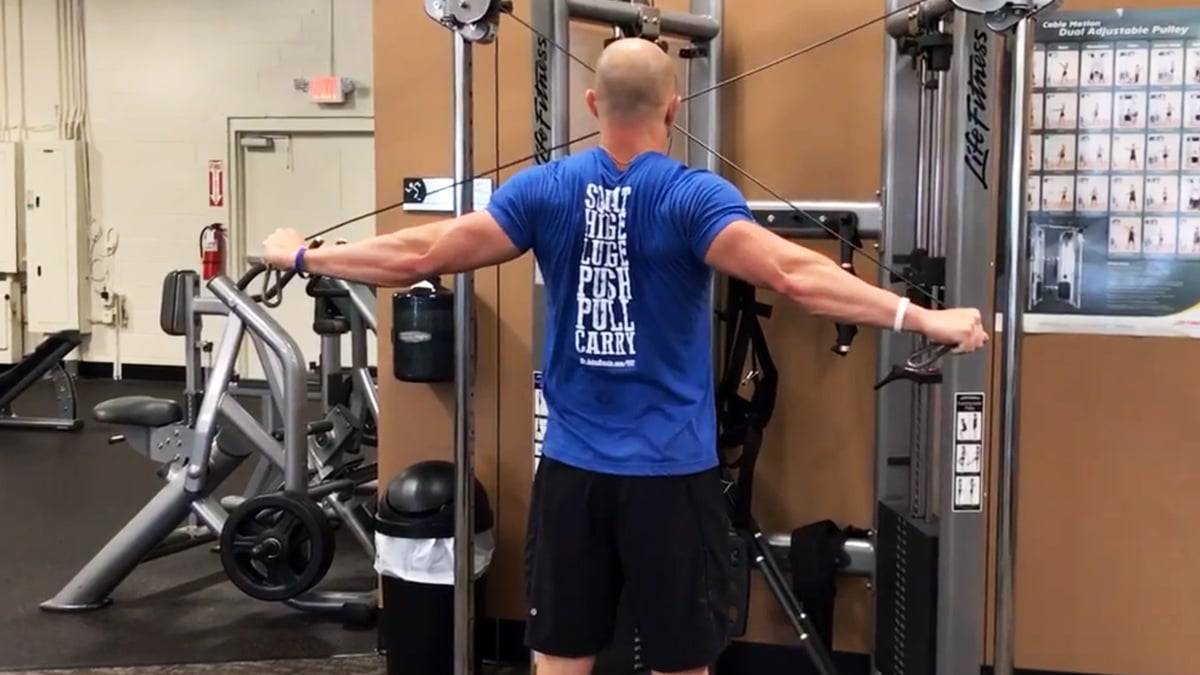
The rear deltoids are located on the back of your shoulders and are responsible for shoulder extension and horizontal abduction. They play a crucial role in maintaining good posture by pulling your shoulders back and down.
The Benefits of Rear Delt Fly Cable

One of the biggest benefits of rear delt fly cable exercises is that they isolate and target the rear delts, which can be difficult to do with other exercises. This targeted approach can help you build strength and size in this area, leading to a more balanced and symmetrical physique.
Incorporating rear delt fly cable exercises into your routine can also help improve your posture by strengthening the muscles that pull your shoulders back and down. This can help prevent shoulder injuries and improve your overall shoulder health.
Technique for Rear Delt Fly Cable Exercise
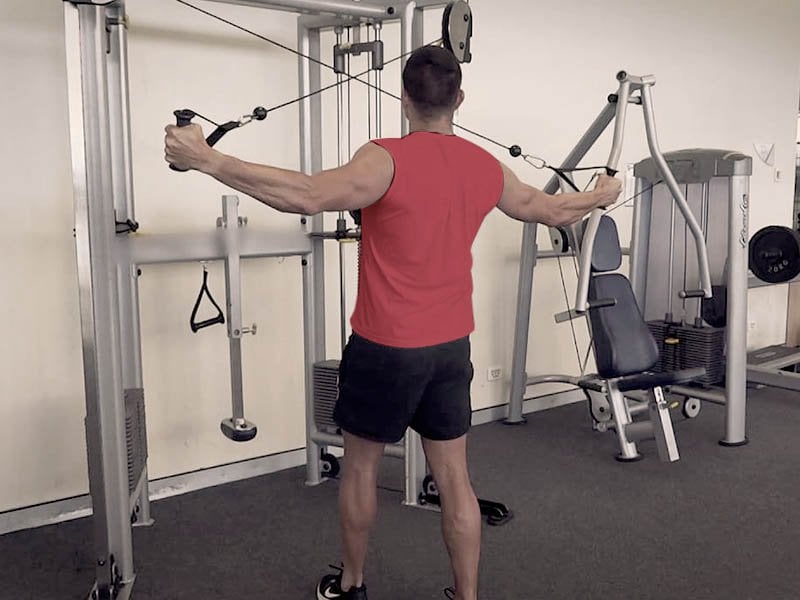
To perform the rear delt fly cable exercise, start by setting the cable machine to shoulder height. Grab the handles with an overhand grip and stand with your feet shoulder-width apart. Your arms should be extended in front of you at shoulder height.
Keeping your arms straight, pull the handles back and out to the sides, squeezing your shoulder blades together at the top of the movement. Slowly lower the handles back to the starting position and repeat for the desired number of reps.
Variations of Rear Delt Fly Cable Exercises

There are several variations of the rear delt fly cable exercise that you can try to keep your workouts challenging and effective. One popular variation is the reverse fly, where you face away from the cable machine and pull the handles back and out to the sides.
You can also try doing the exercise one arm at a time, or using different attachments like ropes or handles to change the angle and target different parts of the rear delts.
Tips for a Successful Rear Delt Fly Cable Exercise
When performing rear delt fly cable exercises, it's important to maintain good form and control throughout the movement. Here are some tips to help you get the most out of this exercise:
- Keep your elbows slightly bent to avoid hyperextension
- Squeeze your shoulder blades together at the top of the movement
- Use a weight that allows you to complete your desired reps with proper form
- Keep your core engaged and your back straight throughout the exercise
Incorporating Rear Delt Fly Cable into Your Workout Routine

Rear delt fly cable exercises can be incorporated into your shoulder workout routine or done as a standalone exercise. Here's an example shoulder workout that includes rear delt fly cable exercises:
- Standing Military Press - 3 sets of 8-10 reps
- Seated Dumbbell Lateral Raise - 3 sets of 12-15 reps
- Rear Delt Fly Cable - 3 sets of 12-15 reps
- Arnold Press - 3 sets of 8-10 reps
- Front Plate Raise - 3 sets of 12-15 reps
Conclusion
Rear delt fly cable exercises are an effective way to target and strengthen your rear deltoids, improve your posture, and prevent shoulder injuries. By incorporating this exercise into your workout routine and following proper technique and form, you can achieve a more balanced and symmetrical physique, as well as better overall shoulder health.
Related video of Rear Delt Fly Cable: Benefits and Techniques

The single dumbbell Bulgarian split squat is an excellent exercise that targets your glutes, quads, and hamstrings. It also improves your balance and stability, making it an essential part of any lower body workout routine. In this article, we will discuss the benefits of this exercise, how to perform it correctly, and some variations you can try to make it more challenging.
Benefits of Single Dumbbell Bulgarian Split Squat
The single dumbbell Bulgarian split squat is a compound exercise that works multiple muscle groups simultaneously. Here are some of the benefits of this exercise:
- Targets your glutes, quads, and hamstrings
- Improves your balance and stability
- Increases your lower body strength
- Helps you develop better coordination and control
- Can be done anywhere with a dumbbell and a bench or step

How to Perform Single Dumbbell Bulgarian Split Squat
Here are step-by-step instructions on how to perform a single dumbbell Bulgarian split squat:
- Begin by standing about 2 to 3 feet in front of a bench or step
- Hold a dumbbell in your right hand and place your left foot on the bench or step behind you, keeping your right foot flat on the ground
- Bend your right knee and lower your body into a lunge position until your thigh is parallel to the ground
- Make sure your right knee is directly above your ankle and your left knee is hovering just above the ground
- Pause for a moment and then push through your right heel to stand back up, squeezing your glutes at the top of the movement
- Repeat for the desired number of repetitions and then switch sides
Make sure to keep your chest up, shoulders back, and core engaged throughout the movement. Also, be sure to use a weight that challenges you but allows you to maintain proper form.
Variations of Single Dumbbell Bulgarian Split Squat
If you want to make this exercise more challenging, here are some variations you can try:
- Hold the dumbbell in both hands instead of just one
- Add a pulse at the bottom of the movement before standing back up
- Use a higher bench or step to increase the range of motion
- Add a jump at the top of the movement for an explosive plyometric exercise

Conclusion
The single dumbbell Bulgarian split squat is a fantastic lower body exercise that can help you build strength, improve your balance, and target multiple muscle groups simultaneously. By following the correct form and gradually increasing the weight and intensity, you can achieve excellent results with this exercise. So, add it to your workout routine and enjoy the benefits!
Related video of Single Dumbbell Bulgarian Split Squat: An Effective Lower Body Exercise

The reverse fly cable machine is a popular gym equipment that is designed to help you strengthen your upper back, shoulders, and arms. This machine is also known as a rear delt fly or a reverse pec deck. It is a great addition to your workout routine if you want to improve your posture, prevent shoulder injuries, and build stronger muscles.
How to Use the Reverse Fly Cable Machine

The reverse fly cable machine is easy to use, but it is important to ensure that you are using the right form to avoid injury and maximize the benefits of the exercise. Here are the steps to follow when using the reverse fly cable machine:
- Start by adjusting the machine to the right height. The handles should be at shoulder height, and the seat should be adjusted to suit your height.
- Sit on the seat with your back straight and your feet flat on the floor.
- Grasp the handles with an overhand grip and keep your elbows slightly bent.
- Slowly pull the handles apart while squeezing your shoulder blades together.
- Hold the position for a few seconds, then slowly return to the starting position.
Repeat the exercise for several reps and sets as recommended by your trainer or based on your fitness goals.
Benefits of the Reverse Fly Cable Machine

The reverse fly cable machine offers several benefits that can help you achieve your fitness goals. Here are some of the benefits:
1. Improved Posture
The reverse fly cable machine targets the muscles in your upper back, which are responsible for maintaining good posture. By strengthening these muscles, you can improve your posture and reduce the risk of back pain and injuries.
2. Stronger Shoulders
The reverse fly cable machine also targets the muscles in your shoulders, including the rear deltoids. These muscles are important for shoulder stability and mobility. By strengthening them, you can improve your shoulder health and reduce the risk of injuries.
3. Better Upper Body Strength
The reverse fly cable machine is a great exercise for building upper body strength. It targets multiple muscles in your back, shoulders, and arms, which can help you build a stronger and more defined upper body.
4. Versatility
The reverse fly cable machine is a versatile piece of equipment that can be used in various ways to target different muscles. You can adjust the weight and the angle of the handles to suit your fitness level and goals.
Tips for Using the Reverse Fly Cable Machine

To get the most out of your reverse fly cable machine workout, here are some tips to keep in mind:
1. Start with a Light Weight
It is important to start with a light weight and focus on your form before increasing the weight. This will help you avoid injuries and ensure that you are targeting the right muscles.
2. Keep Your Shoulders Down
Make sure to keep your shoulders down and avoid shrugging them up when performing the exercise. This can help you target the right muscles and reduce the risk of injuries.
3. Breathe Properly
Remember to breathe properly when performing the exercise. Inhale as you pull the handles apart and exhale as you return to the starting position.
4. Don't Overdo It
It is important to listen to your body and avoid overdoing it. Start with a few reps and sets and gradually increase the intensity and duration of your workout over time.
Conclusion
The reverse fly cable machine is a great exercise for strengthening your upper back, shoulders, and arms. By following the right form and tips, you can maximize the benefits of the exercise and avoid injuries. Whether you are a beginner or an advanced fitness enthusiast, the reverse fly cable machine can be a great addition to your workout routine.
Related video of Reverse Fly Cable Machine: How to Use and Benefits

The Cross Bench Dumbbell Pullover is a popular exercise among fitness enthusiasts. It targets the chest, back, and triceps muscles, making it an effective upper-body workout. This exercise is performed using a bench and a dumbbell, making it an affordable and accessible option for those who want to build upper body strength.
How to Perform the Cross Bench Dumbbell Pullover

Here are the steps to perform the Cross Bench Dumbbell Pullover:
- Lie down on a bench with your head and shoulders resting on the bench.
- Hold a dumbbell with both hands and extend it above your chest, keeping your arms straight.
- Lower the dumbbell behind your head, keeping your arms straight.
- Bring the dumbbell back to the starting position and repeat the movement for the desired number of reps.
Tips for Performing the Cross Bench Dumbbell Pullover

Here are some tips to keep in mind when performing the Cross Bench Dumbbell Pullover:
- Choose a weight that is challenging but allows you to maintain good form.
- Keep your arms straight throughout the movement.
- Use a slow and controlled motion to avoid injury.
- Breathe in as you lower the dumbbell and breathe out as you bring it back to the starting position.
- Engage your core muscles to maintain stability.
Variations of the Cross Bench Dumbbell Pullover

The Cross Bench Dumbbell Pullover can be modified to target different muscle groups or add variety to your workout. Here are some variations to try:
- Single-arm dumbbell pullover: Perform the exercise with one arm at a time.
- Decline dumbbell pullover: Perform the exercise on a decline bench to target the lower chest muscles.
- Barbell pullover: Use a barbell instead of a dumbbell for added resistance.
Benefits of the Cross Bench Dumbbell Pullover

The Cross Bench Dumbbell Pullover offers several benefits, including:
- Targeting multiple muscle groups in the upper body.
- Improving upper body strength and stability.
- Increasing range of motion in the shoulders and chest.
- Helping to prevent shoulder and back injuries.
- Adding variety to your workout routine.
Conclusion
The Cross Bench Dumbbell Pullover is a simple yet effective exercise that can help you build upper body strength and stability. By following the proper form and incorporating variations into your workout, you can target multiple muscle groups and add variety to your routine. Give this exercise a try and see how it can benefit your fitness goals!
Related video of Cross Bench Dumbbell Pullover: A Comprehensive Guide

Shoulder workout is an essential part of any fitness routine. It helps in building strong and well-defined shoulders, which not only look great but also improve overall posture and flexibility. One of the best ways to challenge your shoulder muscles is by incorporating plates into your workout routine. In this article, we will discuss some of the best shoulder exercises that can be done with plates.
Shoulder Press
The shoulder press is a classic exercise that targets the deltoid muscles. This exercise can be done with dumbbells, barbells, or plates. To perform this exercise with plates, stand with your feet shoulder-width apart and hold the plate at chest level. Raise the plate overhead, fully extending your arms, and then slowly lower the plate back to chest level. Repeat for several reps.
Lateral Raises

The lateral raise is another excellent exercise for building shoulder muscles. To perform a lateral raise with plates, hold the plate in front of your body with both hands. Slowly lift the plate to the side, keeping your arms straight. Lift the plate to shoulder height and hold for a second or two before lowering it back down. Repeat for several reps.
Front Raises

The front raise is an excellent exercise for targeting the front deltoids. To perform a front raise with plates, hold the plate in front of your body with both hands. Slowly lift the plate to shoulder height, keeping your arms straight. Hold the plate at shoulder height for a second or two before lowering it back down. Repeat for several reps.
Shoulder Shrugs

Shoulder shrugs are a great exercise for building the upper traps, which are the muscles that run from the neck to the shoulders. To perform shoulder shrugs with plates, hold the plate in front of your body with both hands. Lift your shoulders up towards your ears, hold for a second or two, and then lower them back down. Repeat for several reps.
Upright Rows

The upright row is an excellent exercise for targeting the shoulder and upper back muscles. To perform an upright row with plates, hold the plate in front of your body with both hands. Pull the plate up towards your chin, keeping your elbows high and close to your body. Lower the plate back down and repeat for several reps.
Plate Circles

Plate circles are a great exercise for building shoulder stability and flexibility. To perform plate circles, hold the plate in front of your body with both hands. Make small circles with the plate, rotating it clockwise and counterclockwise. Increase the size of the circles as you become more comfortable with the exercise.
Conclusion
Shoulder workout with plates is an effective way to build strong and well-defined shoulders. Incorporating these exercises into your workout routine can improve your overall fitness level and help you achieve your fitness goals. Remember to start with light weights and increase the weight gradually as you get stronger. Also, make sure to perform these exercises with proper form to avoid injury.
Related video of Shoulder Workout With Plates

Russian Twist is a popular exercise that targets the abdominal muscles, including the obliques. It is a challenging exercise that requires you to rotate your torso while holding a weight or medicine ball. This movement helps to strengthen the core and improve stability. In this article, we will discuss the benefits of Russian Twist and how it can help you achieve your fitness goals.
Improved Core Strength

One of the most significant benefits of Russian Twist is improved core strength. The exercise targets the entire core, including the rectus abdominis, transverse abdominis, and obliques. As you rotate your torso, you engage these muscles, which helps to improve their strength and endurance. This, in turn, can improve your overall stability and balance.
Reduced Risk of Injury

By strengthening your core muscles, Russian Twist can help to reduce your risk of injury. A strong core can help to stabilize your spine and pelvis, which can prevent lower back pain and other injuries. Additionally, the exercise can improve your posture, which can also reduce your risk of injury.
Better Athletic Performance

Russian Twist is a popular exercise among athletes, as it can help to improve their performance. The exercise targets the core muscles that are essential for many sports, including running, jumping, and throwing. By strengthening these muscles, athletes can improve their power, speed, and agility.
Improved Flexibility
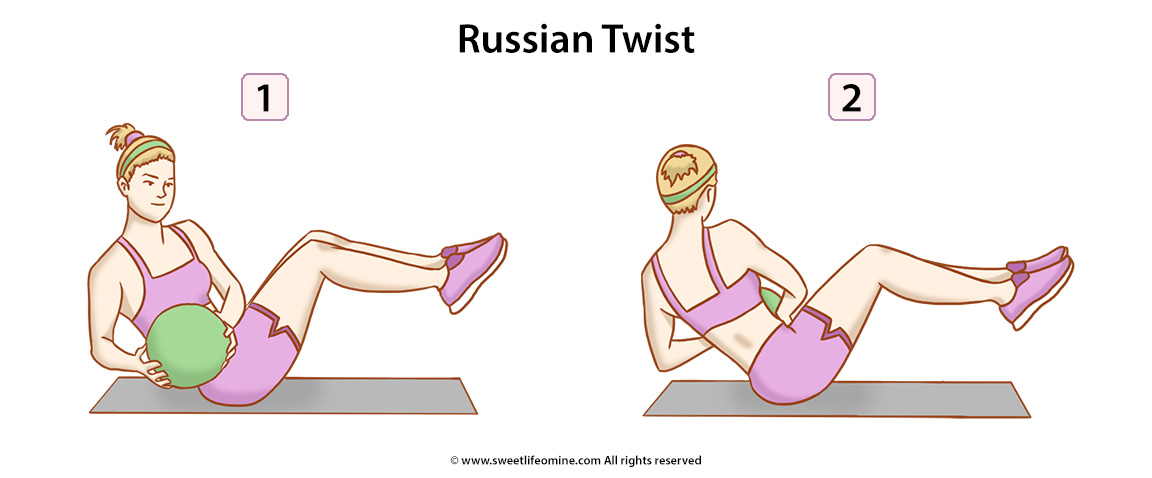
The rotational movement of Russian Twist can also help to improve your flexibility. As you rotate your torso, you stretch your muscles, including the obliques, which can improve their flexibility. Improved flexibility can help to prevent muscle imbalances and reduce your risk of injury.
Burns Belly Fat

Russian Twist is a great exercise for burning belly fat. The rotational movement engages the obliques, which are responsible for the "love handles" that many people want to get rid of. By targeting these muscles, Russian Twist can help to tone and tighten your waistline.
Variety of Exercises

Another benefit of Russian Twist is that it can be performed in a variety of ways. You can use different equipment, such as a medicine ball, dumbbell, or resistance band, to add resistance to the exercise. You can also perform the exercise on a stability ball or balance disc to add an extra challenge to your workout.
Improves Posture

Russian Twist can help to improve your posture by strengthening your core muscles. A strong core can help to support your spine and pelvis, which can improve your overall posture. By improving your posture, you can reduce your risk of back pain and other injuries.
Improves Balance
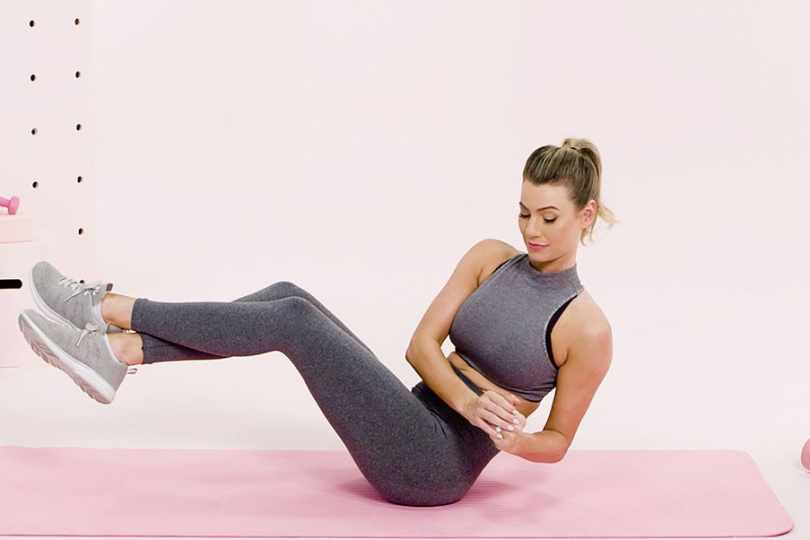
Russian Twist can also help to improve your balance. The exercise requires you to rotate your torso while maintaining your balance, which can improve your overall stability. Improved balance can help to prevent falls and other injuries.
Increases Endurance
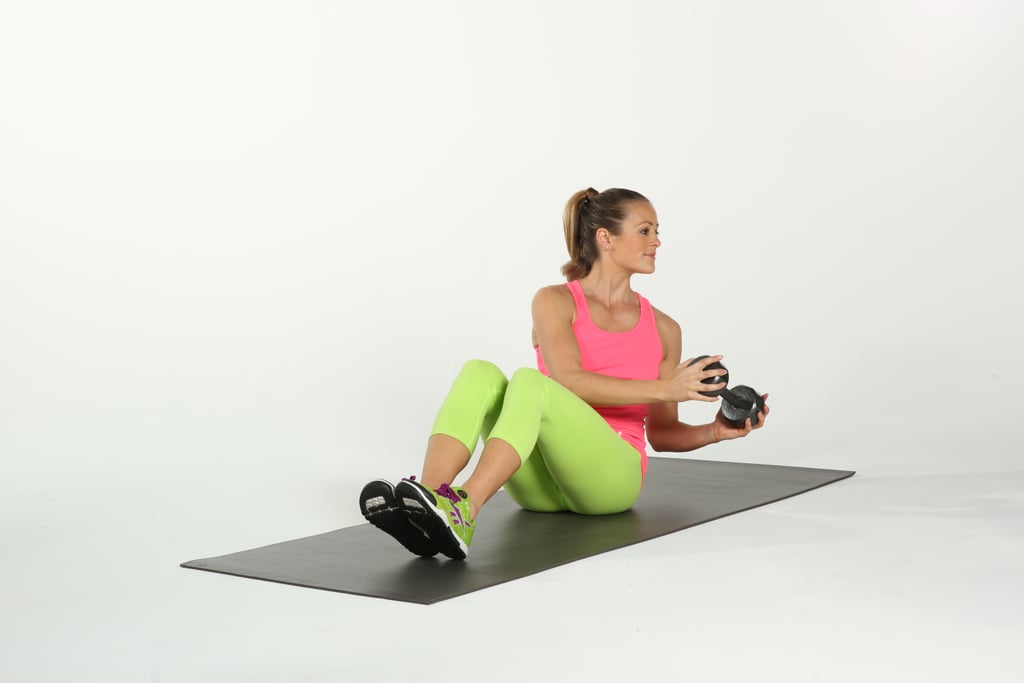
Performing Russian Twist regularly can help to increase your endurance. The exercise targets the core muscles, which are essential for many physical activities. By improving the endurance of these muscles, you can perform physical activities for longer periods without fatiguing.
Improves Coordination

Russian Twist can also help to improve your coordination. The exercise requires you to rotate your torso while holding a weight, which can improve your hand-eye coordination. Improved coordination can help to improve your performance in sports and other physical activities.
Can Be Done Anywhere
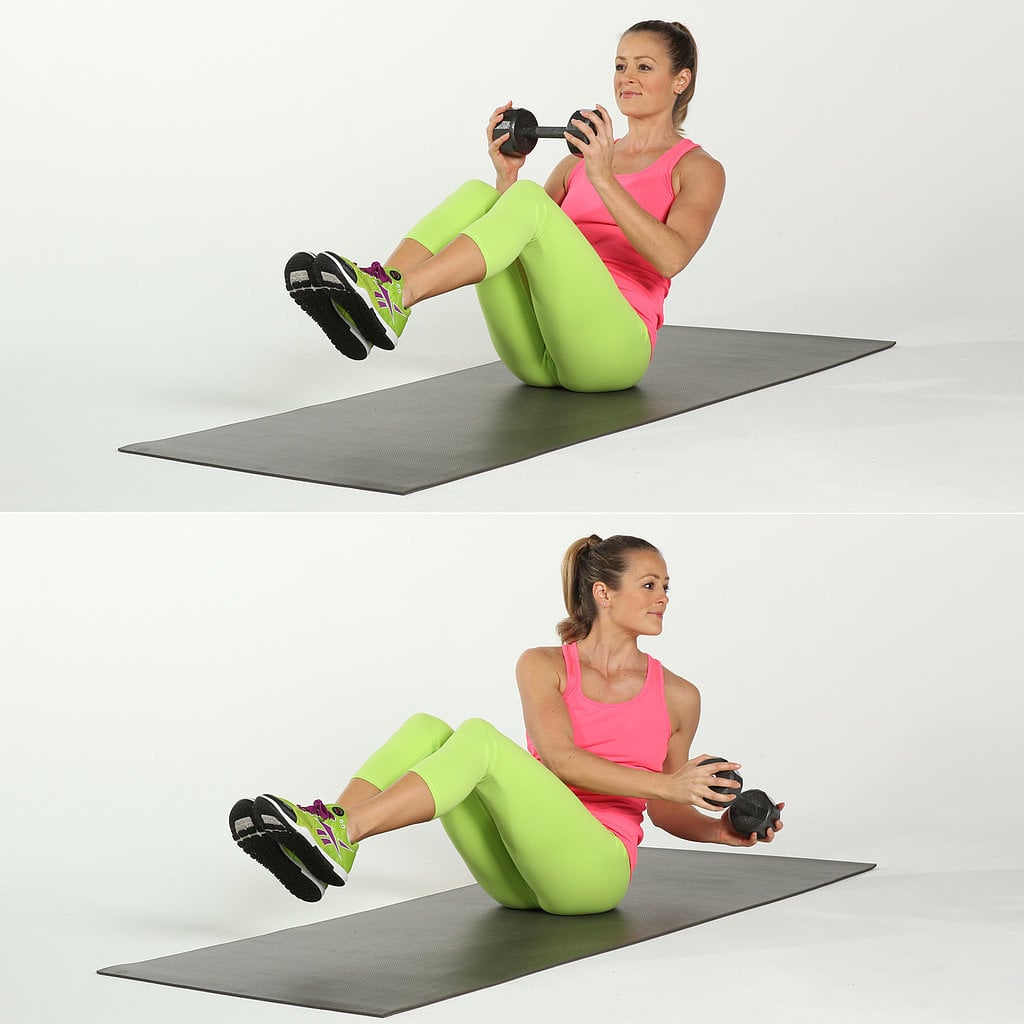
Russian Twist can be performed anywhere, making it a convenient exercise for those with busy schedules. You can perform the exercise at home, at the gym, or even outside. All you need is a weight or medicine ball and a flat surface.
Improves Cardiovascular Health
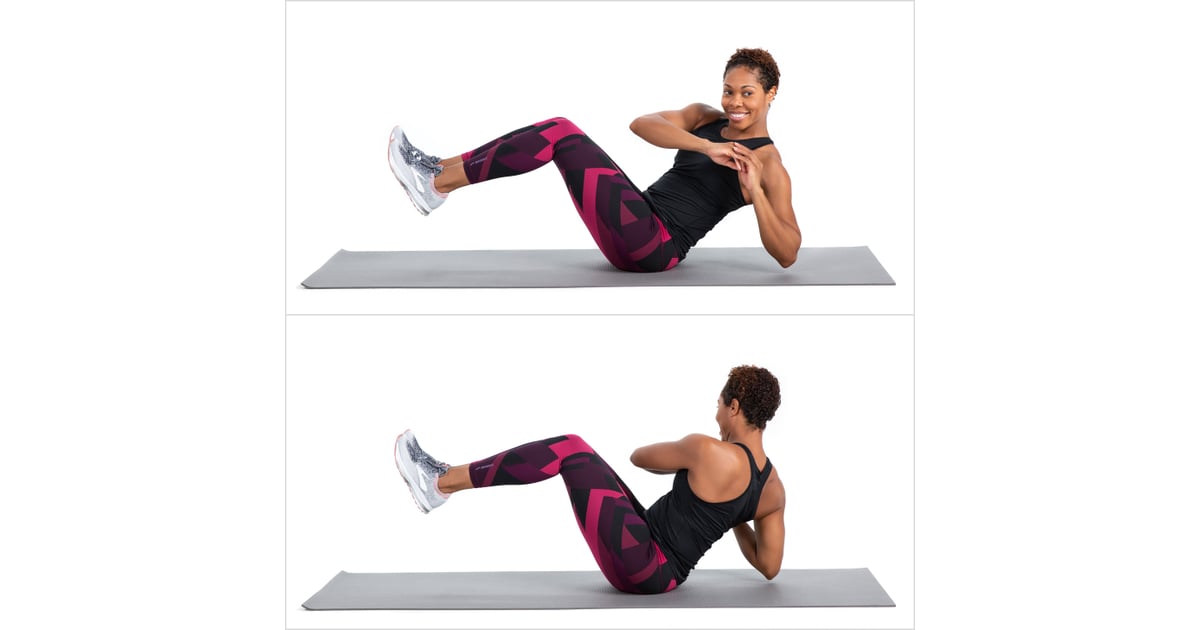
Russian Twist can also help to improve your cardiovascular health. The exercise can increase your heart rate, which can improve your cardiovascular endurance. By improving your cardiovascular health, you can reduce your risk of heart disease and other related conditions.
Improves Mental Health

Finally, Russian Twist can also help to improve your mental health. Regular physical activity, such as Russian Twist, can help to reduce stress and anxiety. Additionally, exercising releases endorphins, which can improve your mood and overall well-being.
Conclusion
Russian Twist is a challenging exercise that offers numerous benefits. It can help to strengthen your core, reduce your risk of injury, and improve your athletic performance. Additionally, it can improve your flexibility, burn belly fat, and improve your posture and balance. By performing Russian Twist regularly, you can improve your overall health and well-being.
Related video of What Does Russian Twist Help With
ads
Search This Blog
Blog Archive
- December 2022 (19)
- November 2022 (29)
- October 2022 (32)
- September 2022 (29)
- August 2022 (32)
- July 2022 (30)
- June 2022 (31)
- May 2022 (30)
- April 2022 (31)
- March 2022 (12)
About Me
